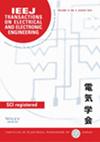求助PDF
{"title":"3D Prior Electrical Resistivity Model Building for Magnetotelluric Inversion Using Neural Network Algorithm to the Kevitsa Mineral Deposit, Finland","authors":"Cuong Van Anh Le, Tuan Van Huynh, Trang Thi Thu Doan, Thuan Van Nguyen","doi":"10.1002/tee.70087","DOIUrl":null,"url":null,"abstract":"<p>Geological information can be interpreted from data collected from drill holes and geophysical method surveys. Limited number of expensive drill holes cannot provide enough information for the vast interest area, but geophysical methods can tell the soil properties through physical parameters as resistivity or inverse of conductivity and seismic velocity if their measurement stations can be sufficiently located. Useful prior geophysical parameter models play a vital role in directing their inversion flow and recovering the good, predicted earth model. Geophysical parameters and chemical elements have strong correlations. This inspires 3D electrical resistivity model building from existences of data collected from drill holes in the Kevitsa Ni-Cu-PGE mineral deposit, Northern Finland. In our work, shallow neural network is applied to predict conductivity value from available mineral chemical elements for each drill hole. Then, 3D interpolation can build 3D conductivity model from all the conductivity values as being measured or predicted. The processed 3D geophysical parameter model can show great match with seismic data and other drill hole information. © 2025 Institute of Electrical Engineers of Japan and Wiley Periodicals LLC.</p>","PeriodicalId":13435,"journal":{"name":"IEEJ Transactions on Electrical and Electronic Engineering","volume":"20 11","pages":"1891-1895"},"PeriodicalIF":1.1000,"publicationDate":"2025-07-03","publicationTypes":"Journal Article","fieldsOfStudy":null,"isOpenAccess":false,"openAccessPdf":"","citationCount":"0","resultStr":null,"platform":"Semanticscholar","paperid":null,"PeriodicalName":"IEEJ Transactions on Electrical and Electronic Engineering","FirstCategoryId":"5","ListUrlMain":"https://onlinelibrary.wiley.com/doi/10.1002/tee.70087","RegionNum":4,"RegionCategory":"工程技术","ArticlePicture":[],"TitleCN":null,"AbstractTextCN":null,"PMCID":null,"EPubDate":"","PubModel":"","JCR":"Q4","JCRName":"ENGINEERING, ELECTRICAL & ELECTRONIC","Score":null,"Total":0}
引用次数: 0
引用
批量引用
Abstract
Geological information can be interpreted from data collected from drill holes and geophysical method surveys. Limited number of expensive drill holes cannot provide enough information for the vast interest area, but geophysical methods can tell the soil properties through physical parameters as resistivity or inverse of conductivity and seismic velocity if their measurement stations can be sufficiently located. Useful prior geophysical parameter models play a vital role in directing their inversion flow and recovering the good, predicted earth model. Geophysical parameters and chemical elements have strong correlations. This inspires 3D electrical resistivity model building from existences of data collected from drill holes in the Kevitsa Ni-Cu-PGE mineral deposit, Northern Finland. In our work, shallow neural network is applied to predict conductivity value from available mineral chemical elements for each drill hole. Then, 3D interpolation can build 3D conductivity model from all the conductivity values as being measured or predicted. The processed 3D geophysical parameter model can show great match with seismic data and other drill hole information. © 2025 Institute of Electrical Engineers of Japan and Wiley Periodicals LLC.
芬兰Kevitsa矿床大地电磁反演三维先验电阻率神经网络模型建立
地质信息可以从钻孔和地球物理方法调查收集的数据中解释。有限数量的昂贵钻孔无法为广大感兴趣的区域提供足够的信息,但地球物理方法可以通过电阻率或电导率逆和地震速度等物理参数来判断土壤性质,如果测量站能够充分定位。有用的先验地球物理参数模型在指导反演流程和恢复良好的预测地球模型方面起着至关重要的作用。地球物理参数与化学元素有很强的相关性。这激发了芬兰北部Kevitsa Ni-Cu-PGE矿床钻孔数据的三维电阻率模型构建。在我们的工作中,浅层神经网络应用于预测电导率值的可用矿物化学元素的每一个钻孔。然后,通过三维插值将所有测量或预测的电导率值建立三维电导率模型。处理后的三维地球物理参数模型与地震资料和其他钻孔信息吻合较好。©2025日本电气工程师协会和Wiley期刊有限责任公司。
本文章由计算机程序翻译,如有差异,请以英文原文为准。


 求助内容:
求助内容: 应助结果提醒方式:
应助结果提醒方式:


